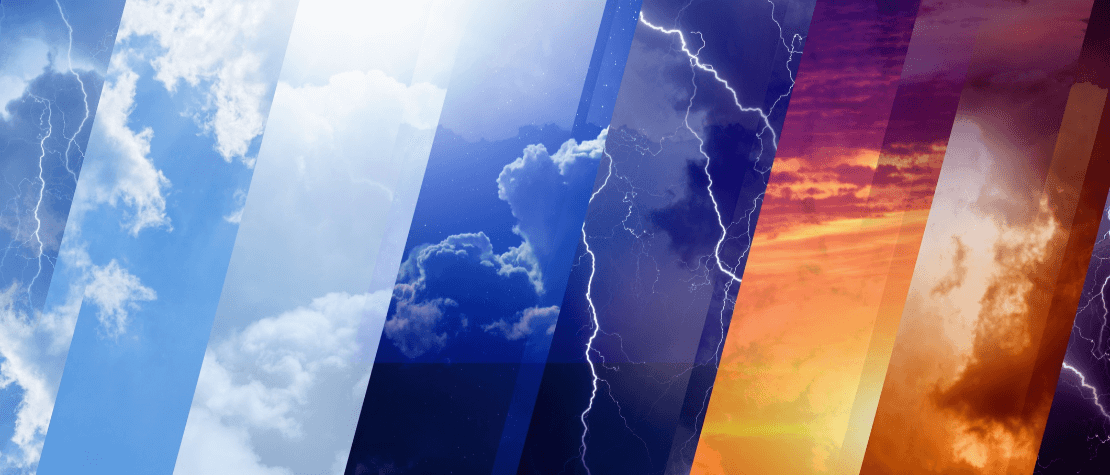Heat Wave Facts for Kids
Heat waves are periods of high temperatures followed by excessive humidity. There is no universal definition of a heat wave; instead, the basis of the phrase is on the area’s

Welcome to our Weather Facts library. On this page you can access one of the largest collections of facts about weather on the internet. This is the perfect resource for kids, teachers or anyone who wants to learn more about weather. We hope you find these facts about weather interesting, amazing and educational. You can begin exploring our weather facts library by scrolling down and choosing a section.
Our Weather Facts category is separated into different sections. Each section is about a specific weather event. For example, we have a section about tornadoes, hurricanes and blizzards. We’re constantly adding new information, if you can’t find weather facts that you need you should check back often. You can also contact us with your requests, and we’ll add it to one of our future updates.
You can find our available weather facts section listed below, in alphabetical order.
Heat waves are periods of high temperatures followed by excessive humidity. There is no universal definition of a heat wave; instead, the basis of the phrase is on the area’s
Are you curious about avalanches? We have shared thirty-nine exciting Avalanche facts for kids with you. An avalanche is a phenomenon when a large amount of snow quickly moves down
Autumn marks the transition from summer’s balmy temperatures to winter’s frigid ones. During the Autumnal Equinox, when day and night are long, the season of Autumn (or Fall) begins.
In this section you’ll learn about tornadoes. You’ll learn how tornadoes form, how tornadoes are rated, the distinctive types of tornadoes and other tornado facts.
In this section you’ll learn about temperature. You’ll learn how to measure temperatures, historic temperature records and other temperature facts.
In this section you’ll learn about thunder. You’ll learn what causes thunder, how to calculate how far away the sound of thunder was and other thunder facts.
In this section you’ll learn about thunderstorms. You’ll learn what causes thunderstorms, what happens during a thunderstorm and other thunderstorm facts.
In this section you’ll learn about severe weather. You’ll learn about the varying types of severe weather, what causes it and other severe weather facts.
In this section you’ll learn about snow. You’ll learn what a snow is, how snow forms, what causes it to snow, the various types of snowstorms and other snow facts.
In this section you’ll learn about rain. You’ll learn what a rain is, how rain forms, what causes rain, the distinct types of rain and other rain facts.
In this section you’ll learn about rainbows. You’ll learn what a rainbow is, how rainbow forms, the unique types of rainbows and other rainbow facts.
In this section you’ll learn about lighting. You’ll learn what lightning is, what causes lightning, the varying types of lightning and other lightning facts.
In this section you’ll learn about hurricanes. You’ll learn what a hurricane is, how they form, the five different hurricane categories and other hurricane facts.
In this section you’ll learn about hail. You’ll learn how hail forms, what a hailstorm is, the damaged caused by hail and other hail facts.
In this section you’ll learn about floods. You’ll learn what a flood is, what causes floods, the numerous types of flooding and other flood facts.
In this section you’ll learn about fog. You’ll learn what fog is, what causes fog, the distinctive types of fog, the dangers of fog and other fog facts.
In this section you’ll learn about clouds. You’ll learn what a cloud is, how clouds form, the various types of clouds and other cloud facts.
In this section you’ll learn about blizzards. You’ll discover what a blizzard is, what causes a blizzard, the dangers of a blizzard and other blizzard facts.
The study of weather is called meteorology. A person who studies weather is called a meteorologist. Meteorologists use many different types of equipment to study the weather and climate. Examples of the equipment used are thermometers, barometers, anemometers, hygrometers, satellites and Doppler Radar. The study of weather helps us understand changes in our climate, predict dangerous storms and other deadly weather events.
Understanding the difference between weather and climate is simple, and ultimately helps you grasp the precise meaning of climate change. Climate is the weather you expect to experience. Weather is what you actual get. Think of weather as what’s happening right now and climate as what you expect to happen based on past data and trends. Climate change is the rapid change of weather overtime that occurs outside the past averages and trends.